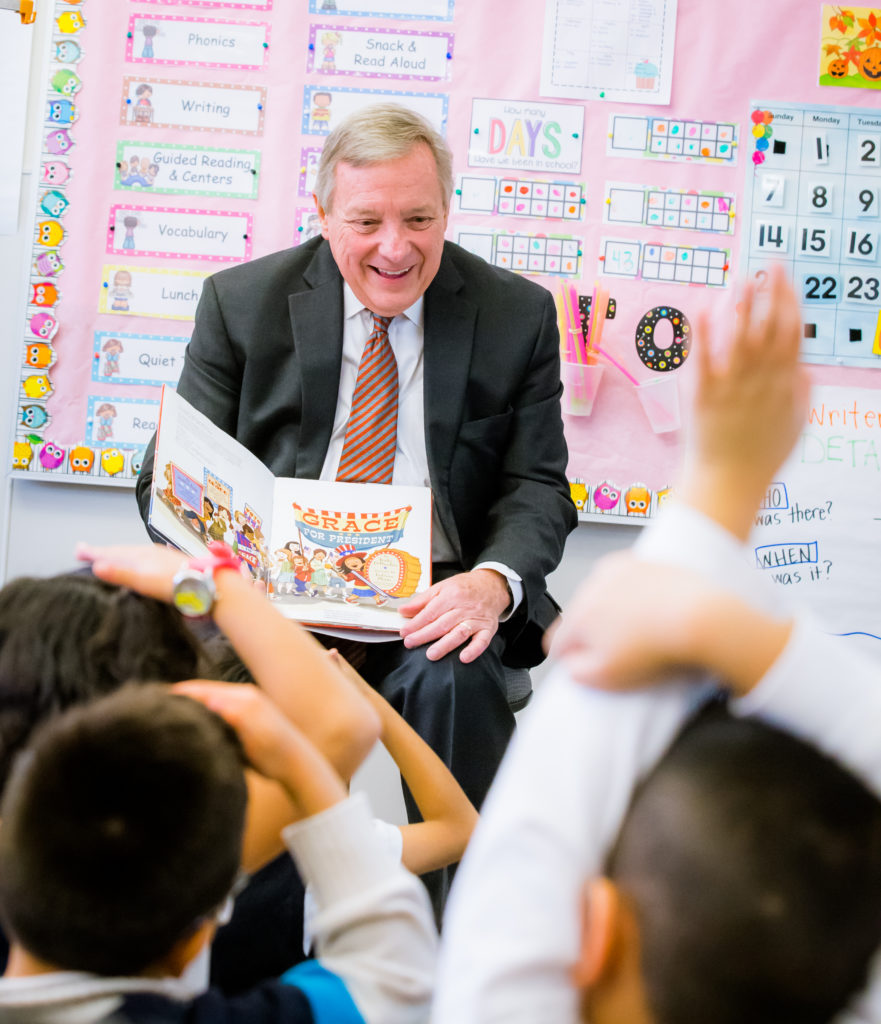
Nov 9, 2018 12:00:00 AM
 That continuity persists beyond the kindergarten year. Fourth-grade teacher Jordan Reece taught her current students before, as second-graders. “I know families really well. There’s an immediate level of trust,” she says. In her current class, only three students left between second and fourth grade. Overall, about 43 percent of the elementary school’s students started as preschoolers. Recently, Christopher House has made more deliberate efforts to continue excellent practices and curriculum from the preschool into the early grades. The preschool follows the Reggio Emilia approach to early childhood education, elements of which now continue upward through second grade. To deepen their knowledge of the approach, early elementary teachers (grades K-2) traveled to Reggio Emilia for a week-long residency. The Reggio Emilia influence shows up most obviously during STEAM time, when student questions and interests help determine what to study. Reggio Emilia also emphasizes observation, arts and a well-organized classroom environment.
That continuity persists beyond the kindergarten year. Fourth-grade teacher Jordan Reece taught her current students before, as second-graders. “I know families really well. There’s an immediate level of trust,” she says. In her current class, only three students left between second and fourth grade. Overall, about 43 percent of the elementary school’s students started as preschoolers. Recently, Christopher House has made more deliberate efforts to continue excellent practices and curriculum from the preschool into the early grades. The preschool follows the Reggio Emilia approach to early childhood education, elements of which now continue upward through second grade. To deepen their knowledge of the approach, early elementary teachers (grades K-2) traveled to Reggio Emilia for a week-long residency. The Reggio Emilia influence shows up most obviously during STEAM time, when student questions and interests help determine what to study. Reggio Emilia also emphasizes observation, arts and a well-organized classroom environment.
Maureen Kelleher is Editorial Director at Future Ed. She was formerly Editorial Partner at Ed Post and is a veteran education reporter, a former high school English teacher, and also the proud mom of an elementary student in Chicago Public Schools. Her work has been published across the education world, from Education Week to the Center for American Progress. Between 1998 and 2006 she was an associate editor at Catalyst Chicago, the go-to magazine covering Chicago’s public schools. There, her reporting won awards from the Annie E. Casey Foundation, the International Reading Association and the Society for Professional Journalists.
The story you tell yourself about your own math ability tends to become true. This isn’t some Oprah aphorism about attracting what you want from the universe. Well, I guess it kind of is, but...
If you have a child with disabilities, you’re not alone: According to the latest data, over 7 million American schoolchildren — 14% of all students ages 3-21 — are classified as eligible for special...
The fight for educational equity has never been just about schools. The real North Star for this work is providing opportunities for each child to thrive into adulthood. This means that our advocacy...
Your donations support the voices who challenge decision makers to provide the learning opportunities all children need to thrive.
Ed Post is the flagship website platform of brightbeam, a 501(c3) network of education activists and influencers demanding a better education and a brighter future for every child.
© 2020–2024 brightbeam. All rights reserved.
Leave a Comment